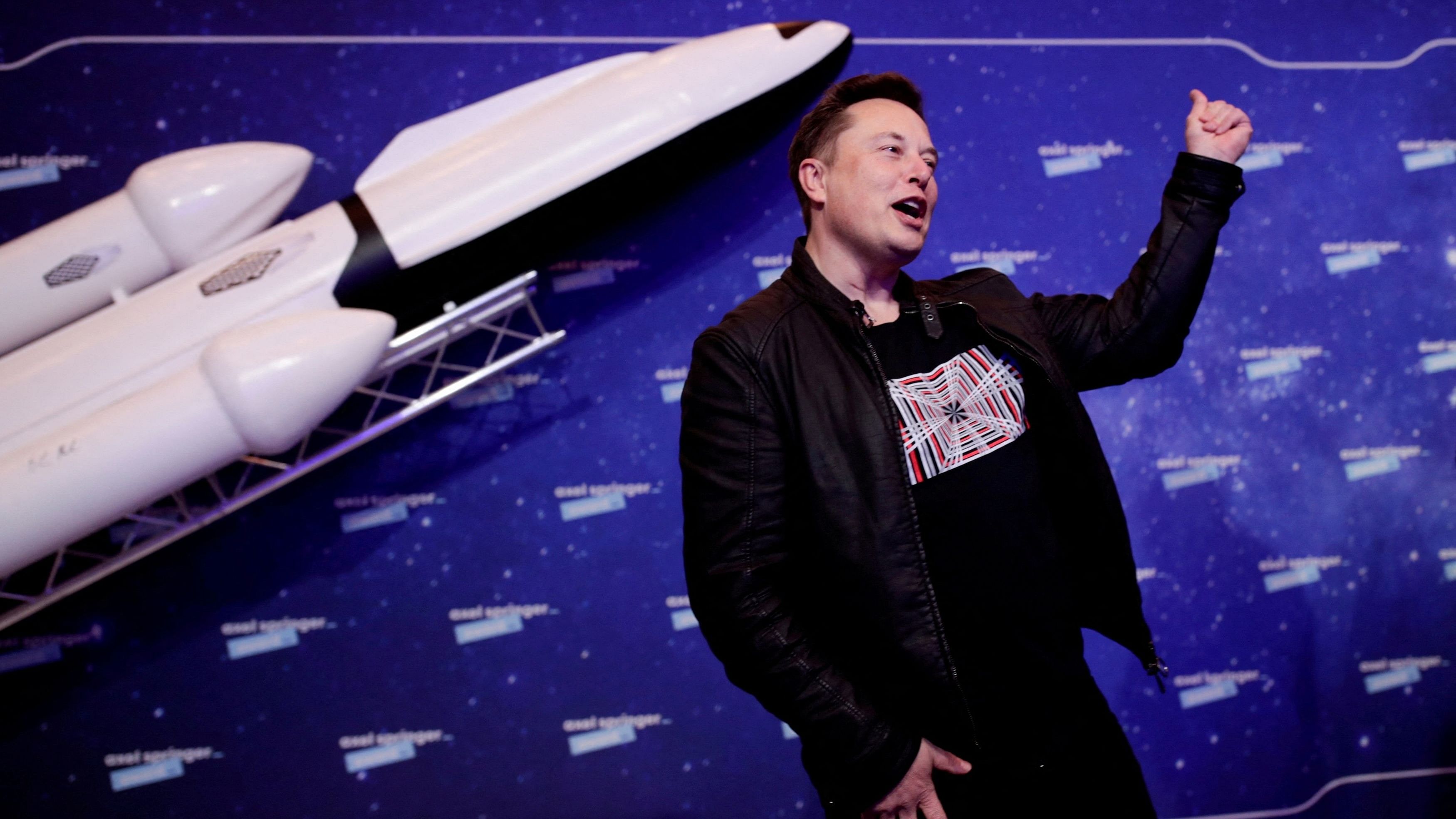
SpaceX owner and Tesla CEO Elon Musk
Credit: Reuters Photo
China is taking its rivalry with Elon Musk’s Starlink satellites to a new level.
While notching major wins such as landing on Mars and operating its own space station, China trails the world’s richest man in low-Earth orbit — a zone within 2,000 kilometers (1,240 miles) of the planet’s surface that’s become increasingly attractive for companies like SpaceX offering high-speed internet access.
SpaceX has deployed more than 5,000 communications satellites at an altitude of around 550 kilometers, but China has made little progress on its own ambitious plans to build a state-owned 13,000-satellite LEO constellation.
Musk’s company is poised to expand its lead even further with a second launch of its massive Starship rocket, which is capable of launching SpaceX’s bigger next-generation Starlink satellites.
The US Federal Aviation Administration reinstated SpaceX’s launch license on Wednesday and the company has said it’s targeting a flight test Friday at 7 a.m. local time from its site in Boca Chica, Texas.
Read More: SpaceX Weighs Spinning Off Starlink Via IPO as Soon as 2024
As China tries to catch up, Beijing is looking to make its mark in a subset of LEO: what’s known as very low-Earth orbit. That’s the region within an altitude of 450 kilometers that Musk and others have so far bypassed, in part because it’s harder to keep satellites from getting pulled back to Earth by gravity and more are needed to cover the same landmass.
State-owned China Aerospace Science and Industry Corp. plans to next month launch the first satellite in a constellation that will grow to 300 VLEO satellites by 2030 and will be used for communication and remote-sensing services, according to CASIC.
Better, Faster
Flying satellites closer to Earth is one of the newest fronts in the space race that’s pitted countries and billionaires alike against one another to carve out a share of the core future technology. The new-generation satellites are smaller and cheaper than their higher-range counterparts, and can provide speedier services.
While still in its infancy, the sector has the potential to be a big earner: Starlink will account for more than $10 billion of SpaceX’s total sales next year, Bloomberg News reported last week.
“The US and Europe are also looking at VLEO,” said Carla Filotico, partner and managing director with SpaceTec Partners in London. That zone is easier to reach and has less space junk than higher orbits, she said, adding that satellites in VLEO are closer to Earth and therefore can send better images and have faster communication with objects on the ground.
Read More: How Musk’s Starlink Sparked a New Kind of Space Race
CASIC didn’t respond to a phone call and fax seeking comment, while the Chinese space agency didn’t respond to a call seeking comment on its plans.
Space Race
The launch is also the latest salvo in an oftentimes bitter competition between Musk’s SpaceX and the Chinese government.
Beijing doesn’t allow SpaceX to provide internet access to Chinese users via Starlink, and the government has spent years supporting local rocket-launch startups with the ambition that they’ll eventually compete with SpaceX for orders to put other companies’ satellites into orbit.
That’s effectively made the country inaccessible for Musk’s company.
“SpaceX is not launching Chinese satellites and Starlink is not operating in China,” said Pierre Lionnet, research and managing director at Eurospace, the professional association of the European space industry. “You need local licenses, and China will not give those to Musk.”
Chinese state media have criticized Starlink’s ties to the US military, with the news website of China’s military warning last December that SpaceX satellites are part of Washington’s ambition for space hegemony.
SpaceX, for its part, hasn’t pulled any punches in its criticism of Beijing.
Testifying to a Senate subcommittee last month, Vice President William Gerstenmaier warned of “aggressive, state-backed Chinese competition,” adding the US faced “well-organized, state-sponsored foreign competition that has no respect for intellectual property.”
That contrasts with the friendly relationship Musk-run electric-vehicle maker Tesla Inc. has with the Chinese government. During a visit in late May and early June, Musk met with officials in Beijing and Shanghai and toured Tesla’s Shanghai factory, which accounts for about half of the company’s global production.
China won’t limit its ambition to just very-low orbit satellites, according to Filotico. Beijing’s other projects include missions to the moon, development of a huge new version of its Long March rocket that could compete with Musk’s Starship, as well as deploying satellites in LEO.
“We have limited visibility of the full capabilities of China in space,” she said. However, “when they want to achieve something, they are very good at it.”